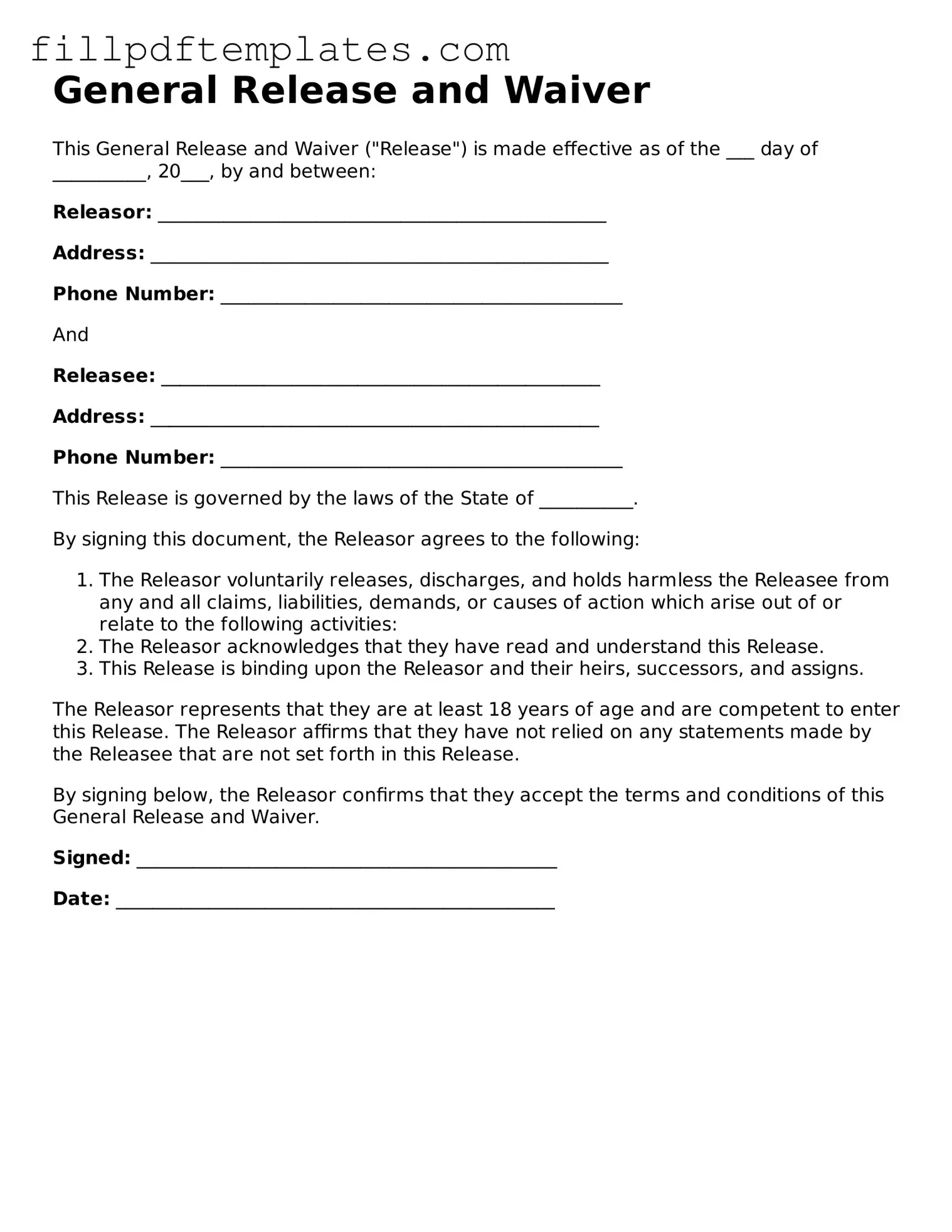Release of Liability Agreement
This Release of Liability Agreement (the "Agreement") is made effective as of the ____ day of __________, 20___, by and between:
Releasor: ______________________________________ (Name)
Address: ______________________________________
and
Releasee: ______________________________________ (Name)
Address: ______________________________________
In consideration of the mutual agreements and covenants contained herein, the parties agree as follows:
1. Release of Liability
Releasor hereby releases, waives, and discharges any and all claims, liabilities, or causes of action against Releasee arising from any activities or events conducted by Releasee. This includes, but is not limited to:
- Personal injury
- Property damage
- Any other losses
2. Assumption of Risk
Releasor acknowledges and agrees that participation in activities may involve inherent risks. Releasor voluntarily assumes all such risks.
3. Governing Law
This Agreement shall be governed by and construed in accordance with the laws of the State of __________.
4. Severability
If any provision of this Agreement is found to be unenforceable, the remaining provisions will continue to be valid and enforceable.
5. Entire Agreement
This document constitutes the entire agreement between the parties concerning the subject matter herein and supersedes any prior agreements or understandings.
IN WITNESS WHEREOF, the parties hereto have executed this Release of Liability Agreement as of the date first above written.
Releasor Signature: _________________________
Date: ____________
Releasee Signature: _________________________
Date: ____________
